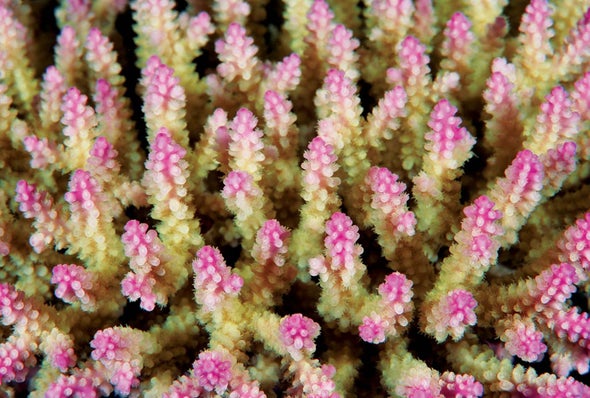Dental scanners could help researchers diagnose stressed-out baby corals

Corals this small are difficult to model in 3-D; researchers can CT scan them, dip them in wax or laboriously stitch the measurements together from a commercial 3-D scanner—but these methods can be slow and provide lower-resolution views. So one day, as Quigley’s dentist used a wandlike device that focused light to create a detailed 3-D tooth model, Quigley got an idea. If this device could measure her chompers’ crevices in detail, she thought, it should be able to scan tiny living corals, too—both teeth and coral are calcium-based and wet.
For a study published in Methods in Ecology and Evolution, Quigley tested the scanning wand and found that it offered a cheap, easy and portable way to model baby corals significantly faster and at higher resolution than currently available techniques. This tool could let scientists more easily examine how coral species endure stress.
“Baby corals are critical for reef restoration and recovery from disturbances like hurricanes and thermal heat waves. Unfortunately, they are the stages we know least about because they are so difficult to measure accurately without great expense,” says Hawai’i Institute of Marine Biology researcher Joshua Madin, who was not involved in the study. “This paper is a great example of taking a mature technology developed in another field and applying it to coral reef science.”
This article was originally published with the title “Coral Hygiene” in Scientific American 327, 6, 14-15 (December 2022)
doi:10.1038/scientificamerican1222-14b
ABOUT THE AUTHOR(S)
Susan Cosier is a freelance journalist focused on science and the environment. She is based in Chicago. Follow Cosier on Twitter @susancosier

